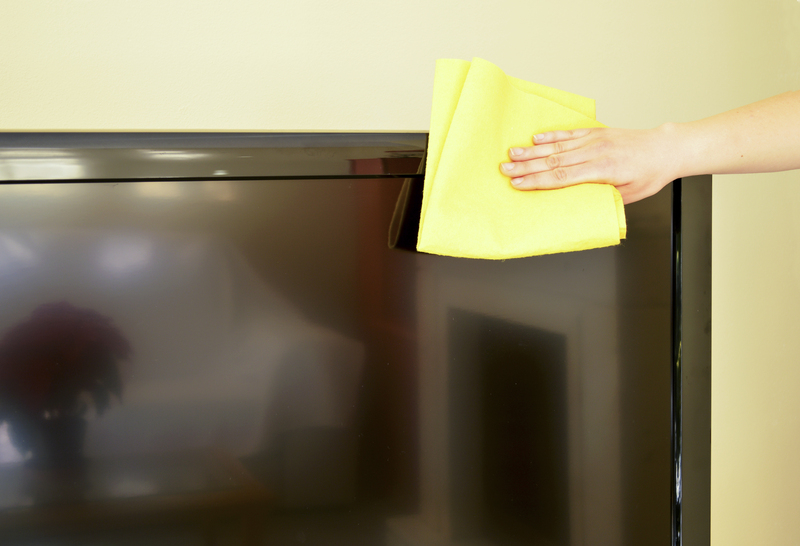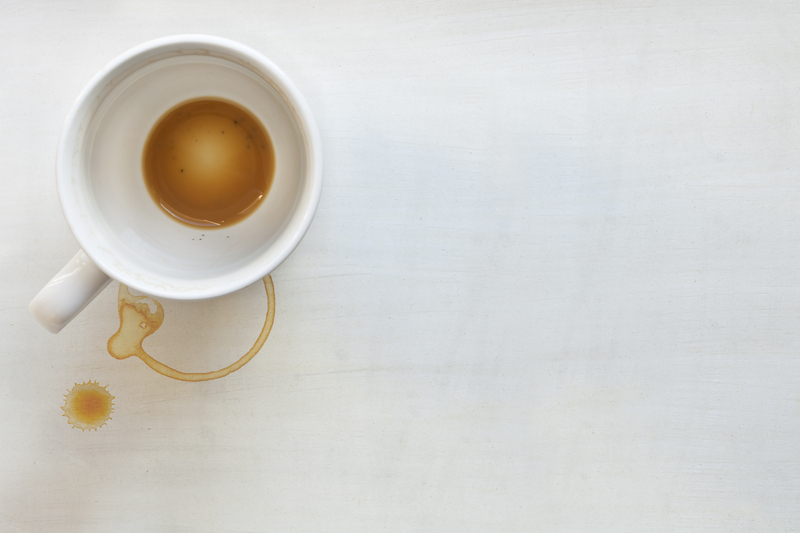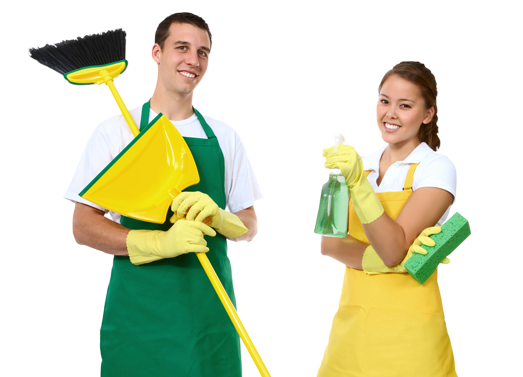Master the Art of Cleaning Tough Burnt Residue off a Stovetop
Posted on 10/09/2025
Master the Art of Cleaning Tough Burnt Residue off a Stovetop
Is your stovetop marred by stubborn, burnt food residue that refuses to budge? Whether you're a culinary enthusiast or a busy parent, encountering burnt-on spills and stuck-on grease is inevitable. The good news is: with the right techniques, even the most tough burnt stovetop residue can be completely removed, transforming your cooking surface back to its original gleam.
Understanding Burnt Stovetop Residue: Why Does It Stick?
The resilient black or brown patches on your stovetop are formed when food, oil, or sauce is exposed to high heat and left unattended. This causes the residue to carbonize, sticking stubbornly to the surface. Over time, multiple layers can accumulate, making the cleaning process even more challenging. Factors such as the type of stovetop--glass, ceramic, gas, or electric--also influence the best cleaning approach.

Essential Supplies for Cleaning Tough Burnt-On Stovetop Messes
Before diving into cleaning, gather the following supplies and cleaning agents to tackle burnt-on stovetop residue efficiently:
- Baking soda
- White vinegar
- Dish soap (preferably degreasing)
- Microfiber cloths
- Non-abrasive scrubbing pads or soft sponges
- Plastic or silicone scraper (avoid metal to prevent scratching)
- Spray bottle
- Razor blade scraper (only for flat glass or ceramic surfaces)
- Stovetop cleaner or cream cleanser (optional)
- Old toothbrush
- Gloves (to protect your hands)
Preparation: Safety First and Initial Steps
Before attempting to clean burnt residue off your stovetop:
- Ensure all burners are turned off and the stovetop is completely cool.
- Remove detachable components like grates or burner covers and soak them in hot, soapy water.
- Wipe away loose debris with a damp cloth to make cleaning the stubborn residue easier.
Step-by-Step: How to Remove Burnt Food from Your Stovetop
Here's a comprehensive, step-by-step method to clean burnt-on stovetop spills for various stovetop types.
For Glass or Ceramic Stovetops
- Apply Baking Soda Paste: Mix equal parts baking soda and water to form a thick paste. Spread it over the burnt areas.
- Spray with Vinegar: Fill a spray bottle with white vinegar and spritz over the baking soda paste. The fizzing action helps break down stuck-on residue.
- Allow to Soak: Let the mixture sit for at least 15-30 minutes. For severely burnt-on food, wait up to an hour.
- Gently Scrub: Use a non-abrasive scrubbing pad or a soft sponge to work the mixture into the residue. Apply light pressure to avoid scratching the surface.
- Scrape if Needed: For the most stubborn spots, carefully use a plastic scraper or a razor blade scraper held at a 45-degree angle. Never use metal tools unless the manufacturer approves it for your stovetop.
- Wipe Clean: Use a clean microfiber cloth dampened with water to remove any remaining residue and cleaning mixture.
- Polish: For extra shine, use a stovetop cleaner or a bit of vinegar on a soft cloth to buff the surface.
For Gas Stovetops
- Remove Grates and Burner Caps: Soak these in hot, soapy water for 15-30 minutes. Use an old toothbrush to scrub away built-up grime.
- Treat the Surface: Sprinkle baking soda over stubborn residue on the stovetop itself.
- Spray with Vinegar: Let it fizz, then wait 15-30 minutes.
- Scrub & Wipe: Use a soft sponge or brush to gently scrub the burnt areas. For metal surfaces, a little elbow grease is permitted as long as you avoid abrasive pads.
- Rinse and Dry: Wipe away all cleaning agents with a damp cloth, then dry thoroughly before replacing the burner caps and grates.
For Electric Coil Stovetops
- Remove Coils and Spill Trays: Always unplug coils before cleaning.
- Soak Trays: Place drip pans in hot, soapy water.
- Clean Around Coils: Wipe the stovetop with a damp cloth. For stubborn residue, apply baking soda paste and scrub gently.
- Clean Coils: Wipe with a damp sponge--do not submerge in water.
- Rinse & Reassemble: Once everything is dry, reattach components.
Natural Solutions for Burnt Residue on Stovetops
If you prefer eco-friendly alternatives, harness the natural cleaning power of common household products:
- Lemon Juice: Acidic and fragrant, lemon helps cut through grease and loosen burnt spots. Sprinkle salt on trouble areas, drip lemon juice, and scrub after 10-15 minutes.
- Vinegar: Besides cleaning, vinegar deodorizes and adds subtle shine. Regular use can help prevent burnt residue buildup.
- Baking Soda: Naturally abrasive, baking soda lifts stuck-on grime without scratching surfaces when used properly.
Commercial Cleaners for Particularly Tough Stains
Sometimes, store-bought stovetop cleaners are necessary for truly resilient residue. Opt for non-abrasive ceramic stovetop cleaners or creamy cleansers designed for your specific stove material. Always check manufacturer recommendations and test on a small area first.
Preventative Tips: Keep Your Stovetop Clean and Shiny
The best way to clean burnt residue off a stovetop is to avoid it altogether. With a few smart habits and cleaning routines, you can keep your cooktop looking pristine:
- Wipe spills promptly: Address splatters as soon as possible to prevent them from burning onto the surface.
- Use burner liners or drip pans: These catch overflow and can be removed and cleaned easily.
- Deep clean weekly: A regular, thorough clean prevents buildup and makes tough jobs less frequent.
- Avoid abrasive materials: Metal scouring pads or harsh chemicals may damage the surface and cause scratches.
- Cook at appropriate heat levels: Excess heat can cause accidental burning, so use the right setting whenever possible.
Expert Hacks for the Stubbornest Burnt-On Food Residue
Still grappling with a particularly stubborn patch of burnt food on your stovetop? Try these expert tricks:
- Heat and Cool Method: For ceramic and glass stovetops, gently heat the affected area on the lowest setting for a few seconds, then turn off and apply a damp towel. The slight expansion and contraction can help loosen tough residue.
- Steam It Out: Place a wet dish towel or paper towel over the caked-on spot and pour hot (but not boiling) water over it. Let it sit for several minutes to soften the residue for easy removal.
- Hydrogen Peroxide Paste: Mix hydrogen peroxide with baking soda for a potent cleaning paste on white stovetops. Spread it on, let it sit, then scrub and rinse.

Frequently Asked Questions About Cleaning Burnt Residue Off a Stovetop
Can I Use a Razor Blade on My Stovetop?
You can use a razor blade scraper on flat glass or ceramic cooktops, but it must be held at a 45-degree angle and only used with gentle pressure. Never use a razor or metal scraper on gas or traditional electric stoves as it may cause permanent scratches.
What Should I Avoid When Cleaning Burnt Residue?
Never use steel wool or abrasive powder cleansers directly on modern cooktops. These can scratch the surface and worsen future cleaning challenges. Similarly, avoid harsh chemicals like bleach or ammonia unless explicitly permitted by the manufacturer.
How Do I Remove Burnt Sugar From My Stovetop?
Burnt sugar is particularly tough due to its sticky and stubborn nature. Use the baking soda and vinegar approach, and repeat as needed. For heavy caramelization, a ceramic stovetop scraper is effective, but patience is key.
How Often Should I Deep Clean My Stovetop?
Regularly wiping down your stovetop after every use and performing a deep clean once a week can prevent tough burnt-on messes from forming, making maintenance much easier.
Summary: Become a Stovetop Cleaning Pro!
Mastering the art of cleaning tough burnt residue off your stovetop requires a blend of patience, effective techniques, and the right supplies. Whether you're dealing with glass, ceramic, gas, or electric cooktops, these methods offer a safe and thorough approach to restoring your cooking surface's shine without causing damage.
Don't let burnt-on food or tough stains spoil the heart of your kitchen. By following these expert steps, utilizing natural solutions, and taking preventative measures, you'll enjoy a spotless stovetop with minimal effort. Happy cleaning!
- Related: How to Clean Glass Cooktops
- Related: Essential Kitchen Cleaning Hacks
Have your own stovetop cleaning tips or success stories? Share them in the comments below!




